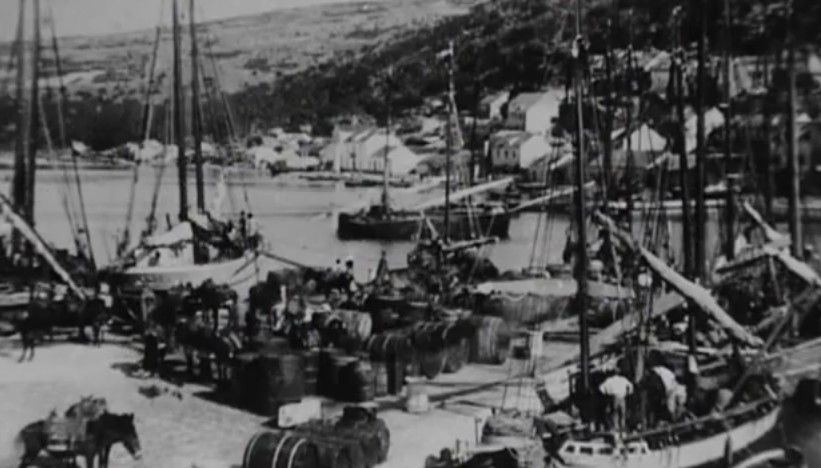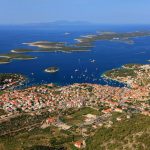One of the oldest known and still existing video footages of Croatia was recorded in 1904, in the Šibenik harbour.
It is a short video, the quality of it is just what you’d expect from the 1904 video, but it shows how humans lived by and on the sea in the early 20th century. And, that life in Dalmatia (and in many other places as well, of course) included wine. Grapes and olives have for centuries been the safest way to make a living in Dalmatia, as you could be almost certain that you will be able to sell the wine and the olive oil you produce – which is not unlike the situation we have today! On the islands especially, growing vines in the numerous and very fruitful vineyards and then being able to sell the grapes to the mainland with the help of cooperatives meant having money to buy those things you weren’t able to make yourself. In order to be able to transport either wine or fresh produce to the mainland ports, you needed to have boats. This is how we get back to the opening image, the one from 1904, showing Šibenik port and several wine-boats (the Croatian term is “brodovi vinari”) that happened to be there for the filming. Those boats were wooden, constructed in a way that allowed the barrels for the wine to be secured in such a way that prevented even the roughest of seas in the Adriatic to throw the barrels overboard. They mostly served the growers on Korčula, Vis, Hvar and Pelješac, to transport their product to the winemakers in Split, Dubrovnik, Zadar or even as north as Rijeka, where most of their product could be sold (as most people on the islands had their own wine; this is a situation significantly different than what we see today, as today’s consumption of wine on those highly tourism-oriented island exceeds the production).
The last active wine-boat is Duboka, still to be seen in Stari Grad on Hvar, although today equipped with plastic containers instead of the wooden barrels, originally built in 1886, still transporting wine to this day. Vela Luka on Korčula was the largest hub for the wine-boats, and at one point around ten boats operated from that port. Many of those boats were converted, and these days they are either used for fishing or for various tourism-related purposes, and wine gets transported to and from the mainland on ferries. So, while not completely lost and forgotten, the story of the heritage of large wooden boats taking wine from the islands to the mainland is not often heard in Croatia these days.
Documentary Brodovi hranitelji, written and directed by Darko Dovranić and shown on Croatian television, was used as a key source of information for this text.
https://www.youtube.com/watch?v=vlARWfvhTF0












